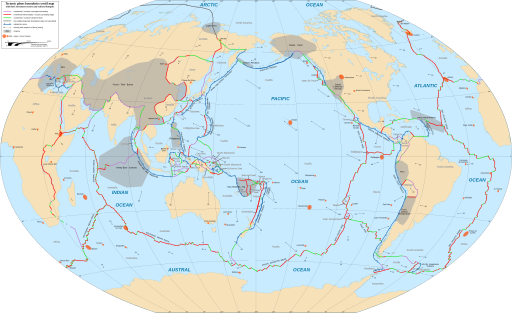Plate Tectonics
By the end of this chapter, you should be able to:
- Describe how the ideas behind plate tectonics started with Alfred Wegener’s hypothesis of continental drift
- Describe the physical and chemical layers of the Earth and how they affect plate movement
- Explain how movement at the three types of plate boundaries causes earthquakes, volcanoes, and mountain building.
- Identify convergent boundaries, including subduction and collisions, as places where plates come together
- Identify divergent boundaries, including rifts and mid-ocean ridges, as places where plates separate
- Explain transform boundaries as places where adjacent plates shear past each other.
Revolution is a word usually reserved for significant political or social changes. Several of these idea revolutions forced scientists to re-examine their entire field, triggering a paradigm shift that shook up their conventionally held knowledge. Charles Darwin’s book on evolution, On the Origin of Species, published in 1859; Gregor Mendel’s discovery of the genetic principles of inheritance in 1866; James Watson, Francis Crick, and Rosalind Franklin’s model for the structure of DNA in 1953 did that for biology. Albert Einstein’s relativity and quantum mechanics concepts in the early twentieth century did the same for Newtonian physics.
The concept of plate tectonics was just as revolutionary for geology. The theory of plate tectonics attributes the movement of massive sections of the Earth’s outer layers to creating earthquakes, mountains, and volcanoes. Many earth processes make more sense when viewed through plate tectonics. Because it is so important in understanding how the world works, plate tectonics is the first topic of discussion in this textbook.
Detailed map of all known plates, their boundaries, and movements.


